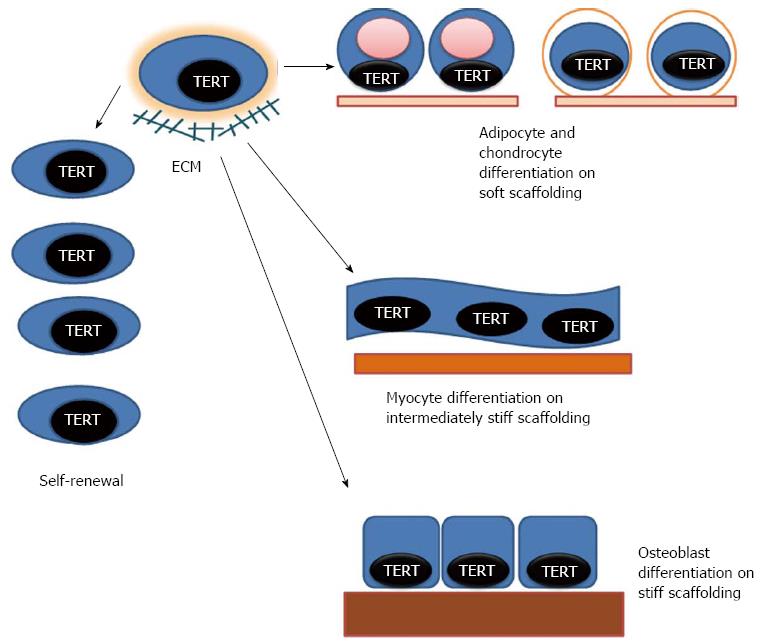Copyright
©2014 Baishideng Publishing Group Co.
World J Stem Cells. Apr 26, 2014; 6(2): 94-110
Published online Apr 26, 2014. doi: 10.4252/wjsc.v6.i2.94
Published online Apr 26, 2014. doi: 10.4252/wjsc.v6.i2.94
Figure 1 Model of human telomerase reverse transcriptase-transformed mesenchymal stem cell self-renewal and differentiation.
Human telomerase reverse transcriptase (hTERT) can be expressed by transfection in human mesenchymal stem cells (hMSCs) from various sources to enhance self-renewal. hTERT transformed cells can be induced to differentiate along multiple mesenchymal lineages. Stiffness of support structures and/or extracellular matrix (ECM) upon which hMSCs are situated is important in differentiated lineage determination. Softer or less stiff support structures/ECM (lightest colored and thinnest bar under the cells) support adipogenic or chondrogenic lineages. Intermediate stiffness (medium colored and thicker bar) can direct myogenesis. Stiffer substrates (darkest colored and thickest bar) can support osteogenic differentiation. Native ECM made from hMSCs from younger hosts may also enhance self-renewal and the differentiative capacity of hMSCs from older sources, and may be superior to singular or limited number of defined ECM components in promoting self-renewal and specific lineage differentiation.
- Citation: Yamaguchi DT. “Ins” and “Outs” of mesenchymal stem cell osteogenesis in regenerative medicine. World J Stem Cells 2014; 6(2): 94-110
- URL: https://www.wjgnet.com/1948-0210/full/v6/i2/94.htm
- DOI: https://dx.doi.org/10.4252/wjsc.v6.i2.94









